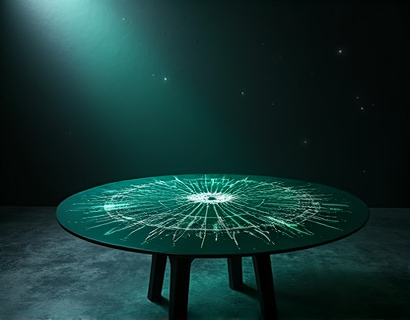Unveiling the Mysteries of the Indus Valley Civilization: A Journey Through Ancient Secrets and Heritage
The Indus Valley Civilization, one of the oldest and most enigmatic civilizations in human history, flourished around 3300 to 1300 BCE in the northwestern regions of South Asia. Spanning across present-day Pakistan and northwestern India, this civilization is renowned for its advanced urban planning, sophisticated water management systems, and intricate craftsmanship. Despite its significance, many aspects of the Indus Valley Civilization remain shrouded in mystery, making it a captivating subject for historians, archaeologists, and enthusiasts alike. This article delves into the depths of this ancient culture, exploring its art, architecture, and daily life, while also highlighting exclusive merchandise that celebrates and honors its rich heritage.
Discovering the Urban Marvels
The cities of the Indus Valley Civilization, particularly Harappa and Mohenjo-Daro, are testaments to the advanced urban planning of the time. These cities were built with a grid-like layout, featuring straight streets and well-planned drainage systems. The houses were made of brick, with multiple stories and sophisticated ventilation systems. One of the most impressive features is the Great Bath of Mohenjo-Daro, a large public bathing facility that showcases the civilization's attention to cleanliness and ritual purity. The precision and uniformity of the bricks used in construction suggest a high level of standardization and organizational skill.
Artifacts found in these cities provide insights into the daily lives of the people. Clay figurines, often depicting women, are among the most common finds. These figurines, some of which are exquisitely detailed, may have had religious or ceremonial significance. Seals with intricate designs, often featuring animals like bulls and elephants, were used for trade and administrative purposes. The seals also provide evidence of a complex writing system, though the script has not yet been fully deciphered.
Religion and Beliefs
The religious beliefs of the Indus Valley Civilization are another area of fascination. While no temples or religious texts have been discovered, the artifacts and urban planning hint at a polytheistic faith. The presence of a central bathing facility and the prevalence of figurines suggest rituals related to water and fertility. Some scholars propose that the civilization worshipped a mother goddess, similar to later Hindu traditions. The lack of monumental religious structures, unlike those found in other ancient civilizations, indicates a more decentralized and possibly household-based religious practice.
Animal motifs on seals and pottery, such as bulls, elephants, and birds, may represent deities or symbols of power. The bull, in particular, is a recurring theme and could have been associated with strength and fertility. The absence of images of kings or rulers in these artifacts suggests a society that may have been governed by a council or a system of elders rather than a centralized monarchy.
Trade and Economy
The Indus Valley Civilization was a hub of trade and commerce, connecting with regions as far as Mesopotamia and the Persian Gulf. Evidence of trade includes weights and measures that show a high degree of standardization, indicating a well-organized system for trade and commerce. The discovery of Mesopotamian artifacts in Indus Valley sites and vice versa confirms extensive trade relations. The civilization's ports, such as those at Lothal, were advanced for their time, featuring docking facilities and warehouses.
Agriculture was the backbone of the economy, with crops like wheat, barley, and cotton being cultivated. The sophisticated irrigation systems, including canals and reservoirs, allowed for efficient farming. The presence of granaries in urban centers suggests a system for storing and distributing food supplies. Crafts such as pottery, metalwork, and jewelry making were also significant, with the civilization producing high-quality goods that were traded widely.
Art and Craftsmanship
The art of the Indus Valley Civilization is characterized by its realism and attention to detail. Terracotta figurines, often depicting everyday activities or religious scenes, are a prominent form of art. These figurines showcase a range of occupations, from farmers and artisans to dancers and musicians, providing a glimpse into the social structure and daily life. The craftsmanship of these figurines is remarkable, with some featuring intricate hairstyles and jewelry.
Jewelry made from gold, silver, and semi-precious stones is another highlight of Indus Valley art. Beads, pendants, and bangles were crafted with precision and beauty. The use of lapis lazuli, a blue stone sourced from Afghanistan, indicates long-distance trade and the value placed on exotic materials. The civilization also produced pottery with intricate designs, often featuring geometric patterns and animal motifs.
Deciphering the Script
One of the greatest mysteries of the Indus Valley Civilization is its writing system. Over 400 distinct signs have been identified, but the language they represent remains undeciphered. The script appears on seals, pottery, and tablets, often in combination with images of animals and symbols. Despite numerous attempts, scholars have not yet cracked the code, leaving much of the civilization's literature and history a mystery. However, the script's presence on administrative and trade documents suggests a sophisticated bureaucratic system.
Efforts to decipher the script continue, with some researchers proposing connections to later Indian languages like Sanskrit. The lack of bilingual inscriptions, which could have provided a key to understanding, adds to the challenge. Nonetheless, the script serves as a testament to the civilization's complexity and the advanced cognitive abilities of its people.
Celebrating the Heritage Through Art and Merchandise
For those interested in the Indus Valley Civilization, a variety of exclusive merchandise is available to deepen the understanding and appreciation of this ancient culture. Art pieces, such as replicas of terracotta figurines and seals, bring the civilization's artistry to modern homes. These replicas are crafted with meticulous attention to detail, capturing the essence of the original artifacts.
Clothing and accessories inspired by the Indus Valley style are also popular. Traditional motifs and patterns, adapted for contemporary wear, offer a unique blend of ancient and modern fashion. Jewelry pieces, featuring beads and stones similar to those used in ancient times, add a touch of historical elegance to any outfit. These items not only serve as decorative pieces but also as conversation starters, sparking interest in the civilization's rich heritage.
Educational resources, such as books, documentaries, and interactive exhibits, are essential for anyone looking to learn more about the Indus Valley Civilization. These resources provide in-depth insights into the civilization's urban planning, religious practices, and daily life. Museums and cultural institutions often host special exhibitions that showcase rare artifacts and offer a comprehensive view of this ancient culture.
For enthusiasts and scholars, exclusive merchandise can serve as a tangible connection to the past. Each item tells a story, from the craftsmanship of ancient artisans to the ongoing efforts to understand and preserve this remarkable civilization. By owning these pieces, individuals can honor the legacy of the Indus Valley Civilization and contribute to the continued interest and research in this fascinating area of history.
In conclusion, the Indus Valley Civilization remains a captivating subject for those interested in ancient history and culture. Through detailed exploration and the celebration of its heritage through art and merchandise, we can keep the memory of this ancient civilization alive and continue to unravel its many secrets.










































